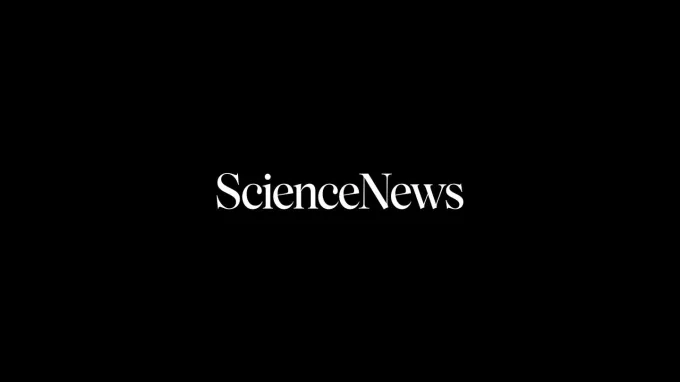Science News Magazine: Current Issue
Vol. 167 No. #7
Trustworthy journalism comes at a price.
Scientists and journalists share a core belief in questioning, observing and verifying to reach the truth. Science News reports on crucial research and discovery across science disciplines. We need your financial support to make it happen – every contribution makes a difference.
More Stories from the February 12, 2005 issue
-
 Humans
HumansNIH tightens its ethics rules
The National Institutes of Health issued new ethics rules to keep its employees from engaging in potentially questionable relationships with organizations that might have a financial interest in NIH activities or policies.
By Janet Raloff -

Anxieties stoke bipolar unrest
Insomnia and other serious sleep difficulties plague many people with bipolar disorder, even after medications have eased their extreme mood swings.
By Bruce Bower -
 Astronomy
AstronomyProton storm erupts from the sun
A storm of high-speed protons, triggered by a Jan. 20 solar eruption, bombarded spacecraft and was the most energetic such squall recorded in 15 years.
By Ron Cowen -
 Agriculture
AgricultureIllegal cigarettes pack toxic punch
Tobacco used in counterfeit cigarettes is apparently grown using metal-laced fertilizers, making the fake products even more harmful than the real things.
By Ben Harder -
 Earth
EarthOf X rays, viruses, and cooked meat
The National Toxicology Program updated its list of human carcinogens to include X rays and several viruses and added lead and some compounds formed in overcooked meats to its list of probable human carcinogens.
By Janet Raloff -
 Physics
PhysicsPutting a new spin on silicon
Embedding ions of manganese in silicon imparts a magnetic field to the otherwise nonmagnetic semiconductor.
By Peter Weiss -
 Materials Science
Materials ScienceTiles stack for shell strength in abalone
In abalone shells, microscopic tiles of calcium carbonate stack on top of each other in a highly ordered arrangement to create a superstrong material.
-
 Astronomy
AstronomySwift detection of a gamma-ray burst
A telescope has for the first time detected X rays directly from an ongoing gamma-ray burst, the most powerful type of explosion in the universe.
By Ron Cowen -
 Earth
EarthLong-winded benefits
Certain wind-energy systems that store excess energy for a time using compressed air can be as reliable as and far cleaner than conventional electric-generating plants.
By Janet Raloff -

Asian Kids’ IQ Lift: Reading system may boost Chinese scores
A new study of Chinese and Greek kids suggests that a Chinese IQ advantage over Westerners stems from superior spatial abilities, possibly because the Chinese learn to read pictorial symbols that emphasize spatial perception.
By Bruce Bower -
 Physics
PhysicsDial-a-Splash: Thin air quells liquid splatter
How much liquids splatter when drops hit surfaces depends on the surrounding air pressure.
By Peter Weiss -
 Health & Medicine
Health & MedicineHeartfelt Fear: Findings link stress and cardiac symptoms
Emotional stress can lead to symptoms that mimic a heart attack, even in people without coronary artery blockages, possibly by causing an unusual secretion of hormones.
By Nathan Seppa -
 Paleontology
PaleontologyGroovy Bones: Mammalian ear structure evolved more than once
Fossils of an ancient egg-laying mammal indicate that the characteristic configuration of the bones in all living mammals' ears arose independently at least twice during the group's evolution.
By Sid Perkins -
 Earth
EarthNatural or Synthetic? Test reveals origin of chemicals in blubber
Natural compounds that are chemically akin to certain industrial chemicals wend their way up marine food chains and accumulate in whale blubber.
By Ben Harder -
 Animals
AnimalsOops! Grab That Trunk: High-diving ants swing back toward their tree
Certain tree-dwelling ants can direct their descent well enough to veer toward tree trunks and climb back home.
By Susan Milius -
 Humans
HumansLean Times: Proposed budget keeps science spending slim
After accounting for inflation, President Bush's proposed research-and-development budget for fiscal year 2006 is down 1.4 percent from FY 2005, a figure that has many science agencies tightening their belts.
-
 Chemistry
ChemistryChemistry au Naturel
Chemists aim to mimic natural systems with the hope of developing more-efficient chemical processes that are also less harmful to the environment.
-
 Math
MathLife on the Scales
A mathematical equation helps explain life processes on all biological scales, from molecules to ecosystems.
-
 Humans
HumansLetters from the February 12, 2005, issue of Science News
Short end of the chromosome Since “women with chronically ill children generally reported more stress” and since “there was a very striking connection between stress and telomere length” (“Stressed to Death: Mental tension ages cells,” SN: 12/4/04, p. 355), isn’t it probable that there is a strong connection between telomere length and becoming the parent […]
By Science News
